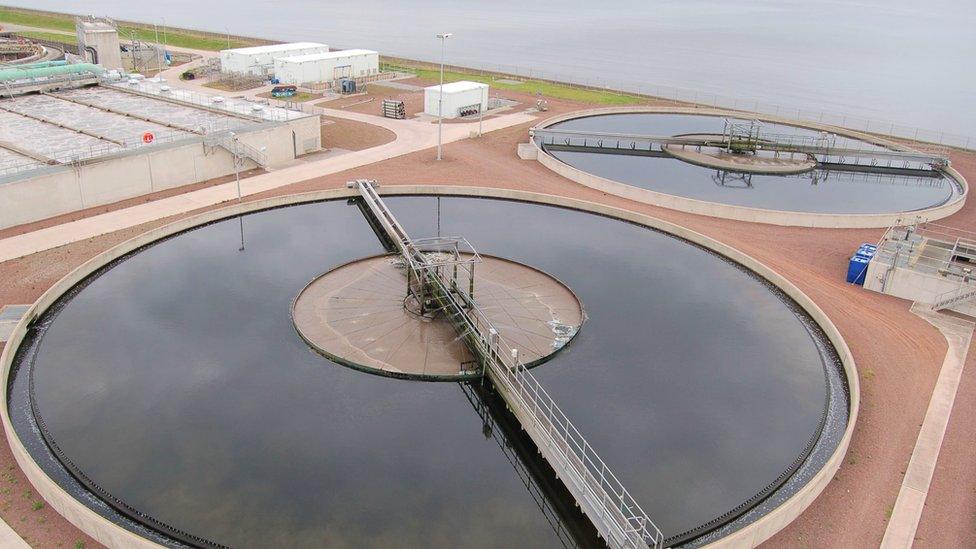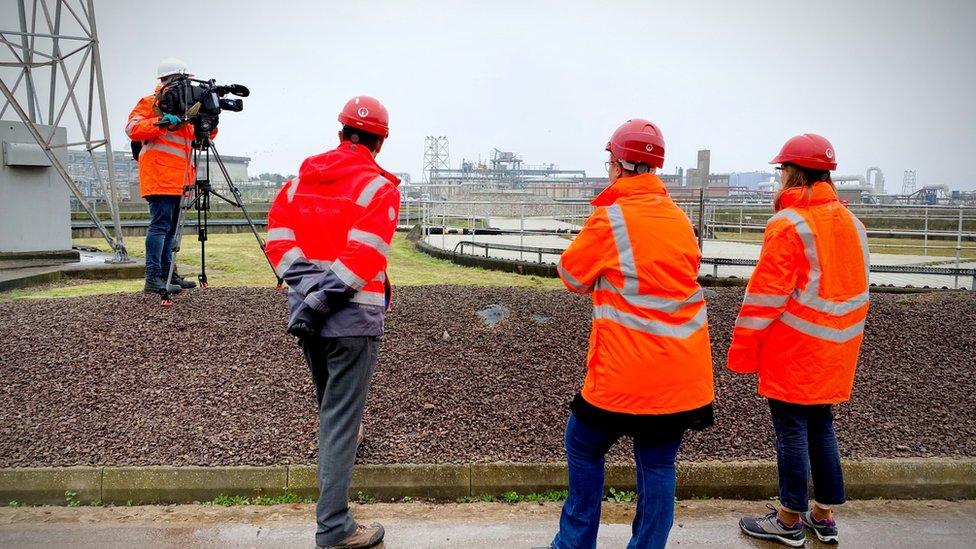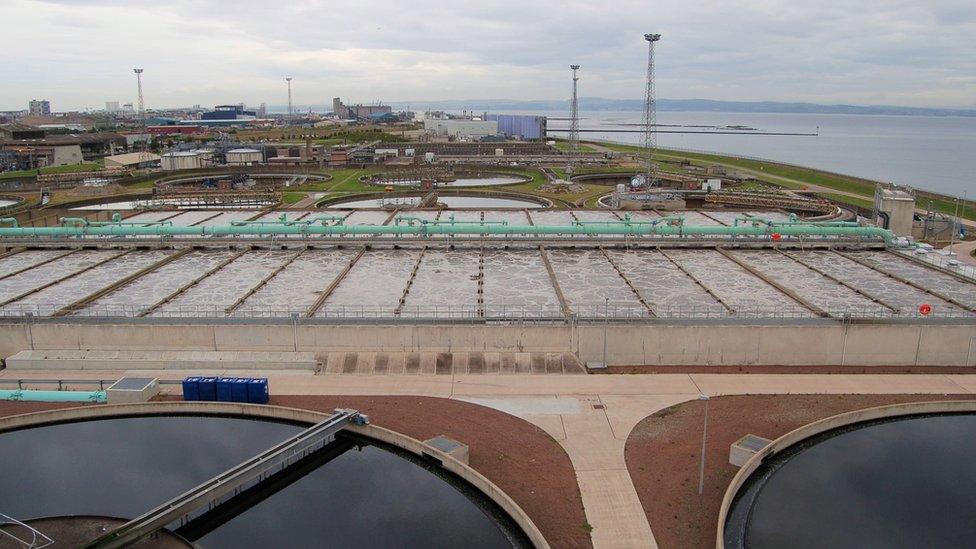Why people are fascinated with treatment of waste
- Published

Seafield waste treatment plant is one of the more unusual attractions of Doors Open Day
Scotland first staged Doors Open Days in 1990, as part of the European Heritage scheme. Back then it was just a handful of buildings in two areas - Glasgow and Ayrshire.
By 2019, it had become the biggest celebration of built heritage in the country, with different areas throwing their doors open at more than a thousand sites across the month of September.
Like so many organisations, particularly those reliant on volunteers and face-to-face tours, the whole event had to be pushed online but still managed to reach more than 184,000 visitors.
This year, they hope to welcome back those visitors on line and in person with a hybrid festival which spans the country and includes some unusual attractions.
None more so than Seafield waste treatment works. Hidden behind a wall on the shoreline at the edge of Edinburgh, it's a vast site that serves close to a million people in the local area.
And it seems more and more of us want to know what's going on behind those closed doors.

Director of Veolia Mark Wilson said Edinburgh tackles waste on its own doorstep
Tickets for their Doors Open Day tours - albeit small, just 12 people at a time - have been snapped up almost instantly since they first started staging them three years ago.
"It's definitely one of our more unusual listings," says Nicola Godsal, national co-ordinator of Scotland's Doors Open Days programme.
"People seem to have a real fascination with industrial sites, and perhaps learning things you didn't know you even wanted to know."
'Instant uptake'
Mark Wilson, regional director of Veolia UK, which runs the site in partnership with Scottish Water, says he's not surprised by the level of interest.
"When we first did this in Inverness, the uptake was almost instant. There is a genuine interest, and the scale of the place is always a real eyeopener."
"We're really proud of the story we tell here, and by opening our doors, hopefully the local community can take that pride as well, it's Edinburgh as a city dealing with waste on its own doorstep."
Edinburgh hasn't always been so coy about the story of its waste.
The cry of "gardy loo" was first heard in the middle ages as waste was thrown from the windows of tenement buildings.
It's a corruption of the French phrase "gardez l'eau" - look out for the water - and was still in use in the 30s and 40s when many people still didn't have inside toilets.
The tour guides also talk about MV Gardyloo, which from 1978 until 1998, took Edinburgh's waste out to sea. Passengers could even take a sight-seeing trip, while the Gardyloo continued its business (dealing with other people's business).
Toilet flushes powering homes
The 21st Century version is a very different proposition.
The four million toilet flushes that arrive here every day are separated, processed and then released back into the water cycle.
There's a pleasingly old school end to the process as the processed water whooshes down a mile-long pipe into the sea, where, because it's so fresh, it floats on top of the salt water (although not for long, as diffusers at the end of the pipes, mix the water together.)
It's an operational site so we wear full PPE, and are closely supervised throughout.
The churning pools of water in the second stage of aeration are not just dramatic to look at, but since Mark explains that they pump air into the wastewater to encourage microbes to consume any remaining organic matter, it also has a strange effect on the water which now has negative buoyancy.

Bioresource extracted from waste at the plant gives off bio-gas and can be used to create electricity
That means, if you were to fall in, you would sink very quickly. We hang on to the safety barriers and speculate whether James Bond, or Taggart might one day find a reason to include Seafield as a location.
But dealing with waste water on this scale has a number of added benefits.
The bioresource extracted from each flush of the toilet is pasteurised to create a nutrient-rich fertiliser and in the process, gives off bio-gas which is used to generate electricity.
Most days that means powering their own site, but some days they also export to the National Grid, powering around 4,800 homes every year.
All from the flush of a toilet.